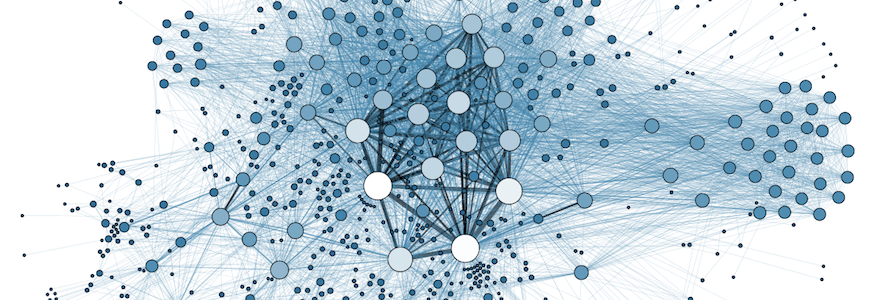By Rob Mitchum // January 10, 2017
Social science and public policy have always been connected, to varying degrees of success. In an ideal world, understanding the mechanisms behind social processes — both good and bad — would directly inform the creation of policies that promote social benefits and reduce consequences. But language, whether academic or political, often separates the two disciplines.
Computation offers a new shared language between social science and public policy, as both fields grow increasingly comfortable with data-driven and computational methods. The Computational Social Science and Public Policy Colloquium, a new series co-organized by two CI centers — Knowledge Lab and the Center for Data Science and Public Policy — hopes to strengthen that link by inviting speakers who are establishing new territory that bridges these research areas.
The monthly series kicked off on January 6th with Tina Eliassi-Rad from Northeastern University’s Network Science Institute. A computer scientist by training, Eliassi-Rad’s research has crossed over into the world of social sciences because of her chosen specialty: networks. With just two simple parts, nodes and edges, networks can represent incredibly complex systems, from regions of the internet to social structures to biological ecosystems. The statistical methods behind extracting knowledge from those networks is a subject of much modern research, fueling valuable applications such as web search and terrorist detection.
Eliassi-Rad’s talk focused on finding extra information in the often intricate spiderweb of these networks, in the form of “roles.” In most networks, not all nodes are created equal — they can have many connections, few connections, act as a central hub, or sit on the outskirts. Methods developed by Eliassi-Rad’s group creates methods to statistically determine these roles from structural features of the network, with no knowledge of the actual content of the network’s nodes and connections necessary.
To demonstrate what these methods can reveal, Eliassi-Rad used a demonstration published as Mapping Big Data, which analyzed a network of businesses involved in the big data industry. After role discovery was applied to the network structure, the group found role types that corresponded to different types of businesses — IT vendors, large vendors, or small vendors, for instance — with no prior information about what different nodes represented. Another example used Congressional bill co-sponsorship data to find different role types for U.S. representatives, as well as detect more general anomalies, such as the implementation of the Hastert Rule in the mid-nineties.
Further applications of these analytics could include counter-terrorism or studying the spread of influence and information through a culture — even the dissemination of “fake news.” Eliassi-Rad hopes to expand the methods to detect additional important role features, such as nodes that are about to switch roles, or use knowledge about one network to make predictions about another. With potential across the space of both social science and public policy, the talk was an apt kickoff for the colloquium series.
For information on future talks in the series, visit the DSaPP events page. You can also join the Center for Data Science and Public Policy’s monthly Data Science Happy Hour; the first edition of 2017 will be Thursday, January 12th (RSVP here).
(Image: “Graph representing the metadata of thousands of archive documents, documenting the social network of hundreds of League of Nations personals.” From Wikimedia Commons.)

